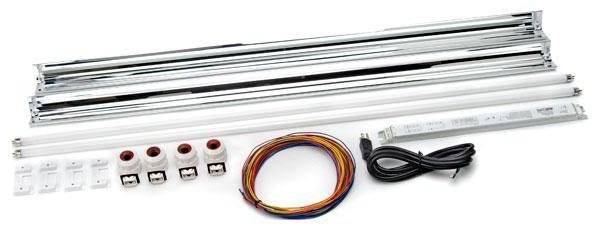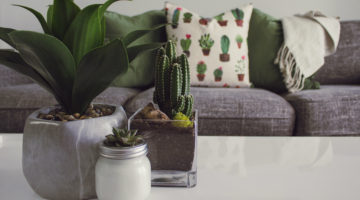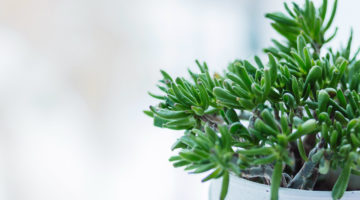 T5 lights are one of the most popular lights. They are used as grow lights, aquarium lights as well as regular lamps indoors and outdoors. So it is no wonder that there is such a huge market for these lights. If you are new to the T5 light scene you probably are confused not only about all the numbers and letters that are listed in the descriptions of these lights and also about all the different parts that make up each single T5 fixture. So in this article I will try to explain a bit about all the important T5 fixture parts, what is their purpose as well as about the numbers and parameters that go with these parts.
T5 lights are one of the most popular lights. They are used as grow lights, aquarium lights as well as regular lamps indoors and outdoors. So it is no wonder that there is such a huge market for these lights. If you are new to the T5 light scene you probably are confused not only about all the numbers and letters that are listed in the descriptions of these lights and also about all the different parts that make up each single T5 fixture. So in this article I will try to explain a bit about all the important T5 fixture parts, what is their purpose as well as about the numbers and parameters that go with these parts.
Ballast
One of the most important T5 fixture parts is its ballast, because without ballast the lights don’t work. The ballast is the detail that regulates the voltage and supplied current that is delivered to the lamp when you first turn it on and during the time it is used. Any electric – discharge light source need a ballast, but they are especially needed for lights such as T5 fluorescent tubes. Most common ballasts that nowadays are used in T5 lights are electronic ballasts, because they are more efficient and over all work better than regular(magnetic) ballasts. The difference is that electronic ballasts use electronic components instead of magnetic core and coil to operate, which means that the electronic ballast use less kilohertz, which in return reduces light flickering as well as noise, but increase overall efficiency of the fixture.
Socket
Another important part of T5 fixtures that usually isn’t mentioned in description or among the parameters of the light is its socket. The socket is the place where you plug in your T5 bulbs which means that without sockets you wouldn’t be able to use your T5 fixtures, because there wouldn’t be a place to plug-in your T5 bulbs. The one parameter that in many cases is listed in the description of T5 lights is that it is UL listed. What that essentially means is that the sockets are inspected and tested, and the UL or Underwriters Laboratories, which is an international safety consulting and certification company, have deemed these sockets safe to use.
Bulbs
Speaking of sockets every T5 fixture also needs T5 bulbs to go into the fixture, because the bulbs are the part of the fixture that actually gives out light. That is pretty self explanatory but what is not so clear in regard of bulbs are the different numbers that are listed in the description of any T5 lights.
- First there is the lumen output or lumen flux. Under this complicated name hides a simple parameter – the overall light that the lamp puts out, but lumen or lm for short is the measurement that is used to count the rate at which a lamp produces light.
- Then of course there is the wattage of T5 light which means how much watts per each hour the light will chew up.
- Another measurement associated with bulbs and the T5 fixture itself is the lamp efficiency. It measures the ratio of light that is output by the lamp (the lumens of the bulbs) to its active power (watts) or simply it means how much lumens per each watt the light produces. This is one of the most accurate measurements to tell how powerful the bulbs and the T5 fixture actually is.
- In regards of solely the bulbs there is such parameter as color temperature which measures the light hue of the emitted light by each bulb. The most common color temperatures for T5 bulbs are 6500 or 6400 Kelvins and 3000 or 2900 Kelivns. Because the 6500 or 6400 Kelvin bulbs are cool colored bulbs, they promote the plats growth and need to be used in the vegetative stages of plants growth, but the 3000 and 2900 Kelvin bulbs are warm colored bulbs and will be great for plants that are already budding and flowering.
- And last but not least usually there is CRI mentioned which stands for color rendering index. What that means is it shows how well the bulbs renders the colors of objects that it illuminates or to put it simply how natural or unnatural the light will appear for the human eye and how natural the objects will look under this light. If the number is below 50 then the light will appear unnatural, but the more it goes above 50 the more natural and daylight like the light will be.
Reflector
And the last part I will discuss here will be the reflectors. All T5 lights or any other light for that matter need reflectors, because they make sure that all emitted light will be reflected upon the plants and won’t go to waste. The most common materials that are used to make reflectors is aluminum and mylar, because they are the most efficient materials and reflects that light the best.
So here are the few of the most important parts of T5 lights as well as few of the measurements and parameters that anyone should understand to be able to chose the best T5 light fixture.



